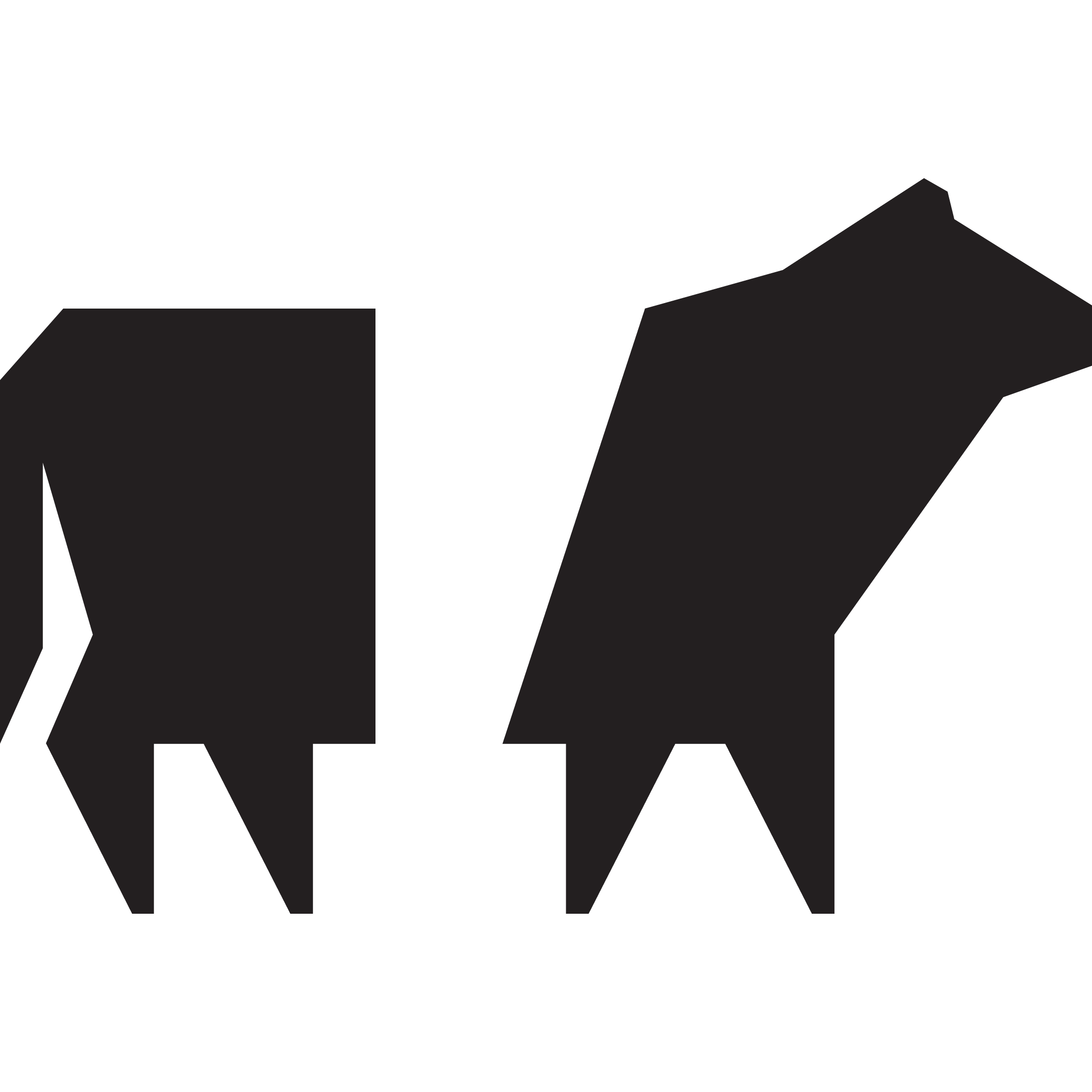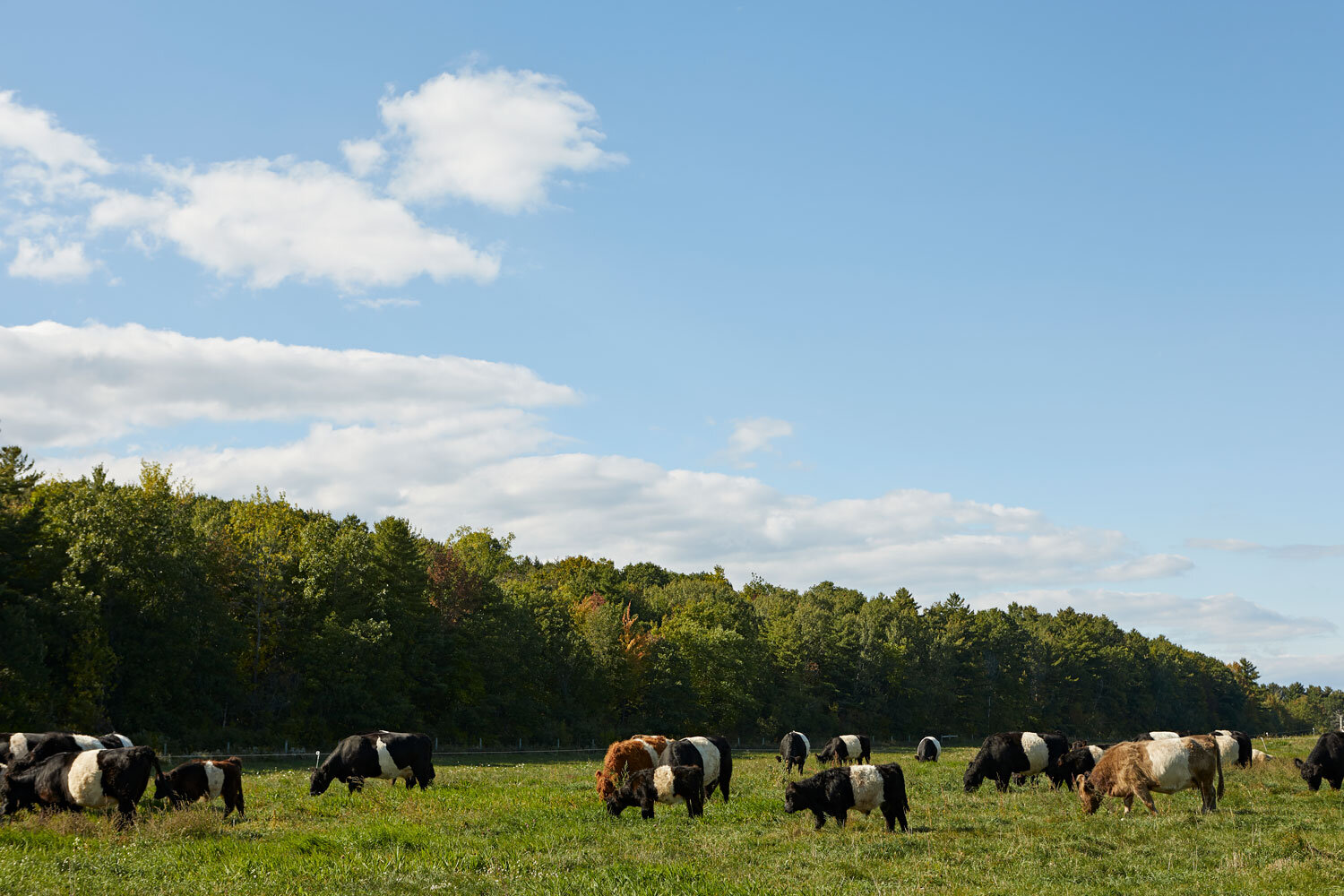Livestock Practices & Key Words
The livestock and land management team focuses on producing grass-fed and pasture-raised livestock. We manage over two hundred acres of hay and rotationally grazed pastures on which we raise Belted Galloway cattle, heritage Tamworth pigs, heritage Kosher King broiler chickens, Red Star hens for pastured eggs, and a mixed breed of Romney and Border Leicester sheep.
The philosophy influencing our grazing and growing practices is rooted in our dedication to the ecological sustainability of the land. At our heart we are grass farmers, producing healthy fields of diverse grasses and legumes in a perennial pasture system. Livestock are an integral part of this healthy pasture system; their manure adds nutrients that increase soil fertility and plant growth, resulting in carbon sequestration.
Below are some key words and resources speaking to our land and livestock management program.
Grass-Fed
Our animals spend time on pasture in the warm months. This grazing is healthy for the land, healthy for the animals, and produces healthy meat for consumers.
Rotational Grazing
We provide our livestock with new areas of high-quality pasture daily while giving our fields long period of rest to allow grass regrowth. This requires staff to move temporary fences every day to ensure the livestock always get the best pasture available. We take many variables into account when building our grazing plan: animal behavior, wildlife needs, haying needs, weather, plant growth rates, and more. The result is a pasture-based system that continuously builds soil health and sequesters carbon.
Soil Fertility
We regularly monitor the ability of our soil to sustain and increase plant growth. To assess soil fertility, we measure the physical (i.e. the structure), chemical (minerals and nutrients), and biological (the presence of healthy plants, bugs, bacteria, and fungi) components of the soil.
Drainage and Water Holding Capacity
Soil’s ability to retain water during dry times and drain excess water during wet times determines what and how well things can grow. At the farm, we have heavy clay soil that was compacted by years of plowing. This means our soil has trouble draining excess water, which makes it difficult for the soil to absorb water and difficult for plants to grow. We use plant roots to help break up the compacted soil and don’t till or plow our fields. This practice allows proper drainage and aeration and has increased our water holding capacity by over two million gallons in five years.
Nitrogen Fixing
Nitrogen is an essential nutrient for leafy green plants. The Earth’s atmosphere is 78 percent nitrogen, and yet many farms add chemical nitrogen fertilizer to their fields every year. Healthy pasture management uses plants to take nitrogen out of the atmosphere and put it into the soil—a process called “nitrogen fixing.” Plants in the legume family (like beans, peas, and clover) are all nitrogen-fixing crops. We seed them into our perennial pastures to increase nitrogen in our soil without using chemicals.
No-Till Cover Crops
Cover crops are used to protect and add nutrients to soil. No-till is a practice of keeping the soil covered while not tilling, which allows us to seed new plants without turning over the soil. We use two techniques to increase the plant diversity in our pastures without using a plow: frost seeding and drill seeding.
Frost Seeding
Frost seeding is done in the spring, when the ground is still frozen but the snow is gone. As the topsoil freezes at night and thaws during the day, temporary cracks form. We spread seeds during this time, which fall into the cracks and then germinate after the soil warms and recloses around them.
Recommended Reading
Some inspiring and recommended resources to learn more about land management, grazing, and our agricultural practices:
The Art and Science of Grazing by Sarah Flack
The Stockman Grass Farmer Newspaper
Cows Save the Planet by Judith Schwartz
Defending Beef by Nicolette Hahn Niman
The Righteous Porkchop by Nicolette Hahn Niman
Holistic Management Handbook by Allan Savory







